-
 Bitcoin
Bitcoin $106,437.2012
0.82% -
 Ethereum
Ethereum $2,442.5287
0.82% -
 Tether USDt
Tether USDt $1.0005
-0.02% -
 XRP
XRP $2.1812
-0.27% -
 BNB
BNB $645.1327
0.45% -
 Solana
Solana $146.2379
0.39% -
 USDC
USDC $0.9999
-0.01% -
 TRON
TRON $0.2751
0.92% -
 Dogecoin
Dogecoin $0.1662
-0.23% -
 Cardano
Cardano $0.5827
-1.22% -
 Hyperliquid
Hyperliquid $37.5225
0.04% -
 Bitcoin Cash
Bitcoin Cash $479.0877
4.02% -
 Sui
Sui $2.7846
-3.27% -
 Chainlink
Chainlink $13.3576
0.84% -
 UNUS SED LEO
UNUS SED LEO $9.0252
-1.20% -
 Stellar
Stellar $0.2455
-1.07% -
 Avalanche
Avalanche $18.0680
-1.81% -
 Toncoin
Toncoin $2.8948
-1.07% -
 Shiba Inu
Shiba Inu $0.0...01164
-1.65% -
 Litecoin
Litecoin $85.0637
-0.06% -
 Hedera
Hedera $0.1526
-0.89% -
 Monero
Monero $316.2941
0.78% -
 Ethena USDe
Ethena USDe $1.0003
-0.04% -
 Polkadot
Polkadot $3.4113
-1.87% -
 Dai
Dai $1.0000
-0.01% -
 Bitget Token
Bitget Token $4.4488
5.16% -
 Uniswap
Uniswap $7.1740
3.09% -
 Pi
Pi $0.5968
11.43% -
 Pepe
Pepe $0.0...01010
-0.65% -
 Aave
Aave $264.3189
0.40%
Bitcoin personal mining tutorial
Personal Bitcoin mining can be initiated by understanding hardware types, configuring mining software, joining a mining pool, troubleshooting issues, and monitoring and optimizing settings for maximum profitability.
Jan 11, 2025 at 07:22 am
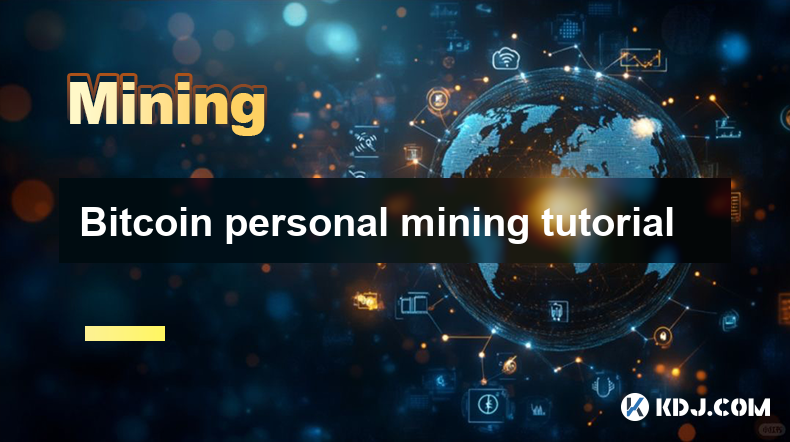
Bitcoin Personal Mining Tutorial: A Comprehensive Guide
Key Points:
- Hardware Selection: Understanding the different types of mining hardware and their pros and cons
- Software Configuration: Setting up the necessary software and configuring it for efficient mining
- Pool Selection: Choosing a mining pool and understanding how they operate
- Troubleshooting Common Issues: Identifying and resolving potential problems during the mining process
- Monitoring and Optimization: Tracking mining performance and adjusting settings to improve profitability
Hardware Selection
- ASIC Miners: Specialized hardware designed specifically for mining cryptocurrencies. They offer high hash rates but consume significant electricity and require dedicated equipment.
- GPUs (Graphics Processing Units): Originally intended for gaming, GPUs can be used for mining cryptocurrencies as well. They provide decent hash rates and can be more cost-effective than ASIC miners in some cases.
- CPUs (Central Processing Units): General-purpose processors that can be used for basic mining operations. However, they have much lower hash rates and are not suitable for large-scale mining.
Software Configuration
- Mining Software: Choose a reputable mining software that is compatible with your hardware and operating system.
- Miner Configuration: Configure the software with the correct mining pool address, username, and password.
- Advanced Settings: Optimize settings such as clock speed, voltage, and cooling to improve mining efficiency and reduce energy consumption.
Pool Selection
- Pools: Join a mining pool to combine your resources with other miners, increasing your chances of finding blocks and earning rewards.
- Pool Fees: Consider the pool fees associated with joining, as they can impact your overall profitability.
- Pool Reputation: Research and select a pool with a good reputation for stability, reliability, and timely payment of rewards.
Troubleshooting Common Issues
- Hashrate Issues: Monitor your hashrate to ensure optimal performance. If it is significantly lower than expected, check for hardware malfunctions or software errors.
- Pool Connectivity Problems: Verify that your miner is connected to the mining pool. If not, troubleshoot network issues and ensure port forwarding is configured correctly.
- Overheating: Monitor the temperature of your mining hardware. If it exceeds recommended levels, adjust cooling settings or consider upgrading the cooling system.
Monitoring and Optimization
- Monitoring Tools: Utilize monitoring tools to track hashrate, temperature, and other parameters to identify any issues or areas for improvement.
- Optimization: Regularly adjust settings based on monitoring data to maximize efficiency and increase profitability. This includes tweaking clock speeds, voltages, and cooling arrangements.
- Performance Tuning: Engage in ongoing performance tuning to push your hardware to its limits while maintaining stability and preventing hardware damage.
FAQs
Q: How much does it cost to assemble a personal mining rig?
A: The cost varies depending on the type of hardware and other components used. Entry-level rigs can start at around $1,000, while more advanced setups can cost thousands of dollars.
Q: How long will it take to recoup the investment in a mining rig?
A: The payback period depends on factors such as the cryptocurrency price, mining difficulty, electricity costs, and rig efficiency. It can range from a few months to several years.
Q: Is personal mining still profitable?
A: It can be profitable under the right conditions. However, it requires careful calculation of costs, optimization, and market monitoring to maximize returns.
Q: What are the potential risks associated with personal mining?
A: Risks include hardware malfunctions, software errors, power outages, and cryptocurrency market volatility. It is essential to consider these risks before making an investment.
Q: Is it possible to mine Bitcoin without a pool?
A: Solo mining is possible but has a much lower chance of success compared to pool mining. It is only recommended for experienced miners with specialized hardware and a deep understanding of the process.
Disclaimer:info@kdj.com
The information provided is not trading advice. kdj.com does not assume any responsibility for any investments made based on the information provided in this article. Cryptocurrencies are highly volatile and it is highly recommended that you invest with caution after thorough research!
If you believe that the content used on this website infringes your copyright, please contact us immediately (info@kdj.com) and we will delete it promptly.
- Shiba Inu, Dogecoin, and Meme Coins: What's the Hype in 2025?
- 2025-06-25 16:25:12
- JasmyCoin's Wild Ride: 6x Setup or Just a Mirage?
- 2025-06-25 16:25:12
- Mastercard's Stablecoin Integration: Revolutionizing On-Chain Commerce, NY Style
- 2025-06-25 16:45:12
- Malaysia's Cash Conundrum: When Coin Refusal Sparks Debate
- 2025-06-25 16:45:12
- Truth Social, Bitcoin ETF, Ethereum ETF: Trump Media's Crypto Play
- 2025-06-25 17:05:13
- Syrup Price Surges as Maple Finance AUM and Revenue Skyrocket: A Deep Dive
- 2025-06-25 17:25:13
Related knowledge

What is liquidity mining in DeFi? How to participate and calculate the income?
Jun 20,2025 at 03:21pm
Understanding Liquidity Mining in DeFiLiquidity mining is a core concept in the decentralized finance (DeFi) ecosystem that allows users to earn rewards by providing liquidity to decentralized exchanges (DEXs) or lending platforms. In traditional finance, liquidity providers are usually institutional players, but DeFi democratizes this process, enabling...
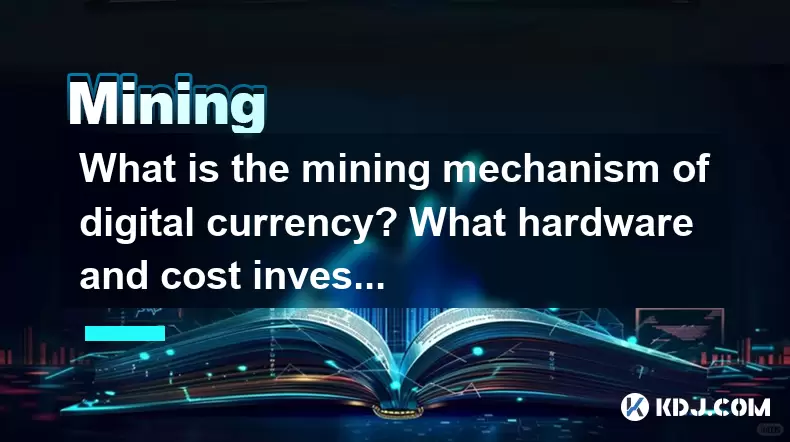
What is the mining mechanism of digital currency? What hardware and cost investment are required?
Jun 23,2025 at 06:29am
Understanding the Mining Mechanism of Digital CurrencyThe mining mechanism of digital currency is a foundational process that ensures transaction validation and network security. In most Proof-of-Work (PoW) cryptocurrencies like Bitcoin, miners compete to solve complex mathematical puzzles using computational power. The first miner to find a valid solut...
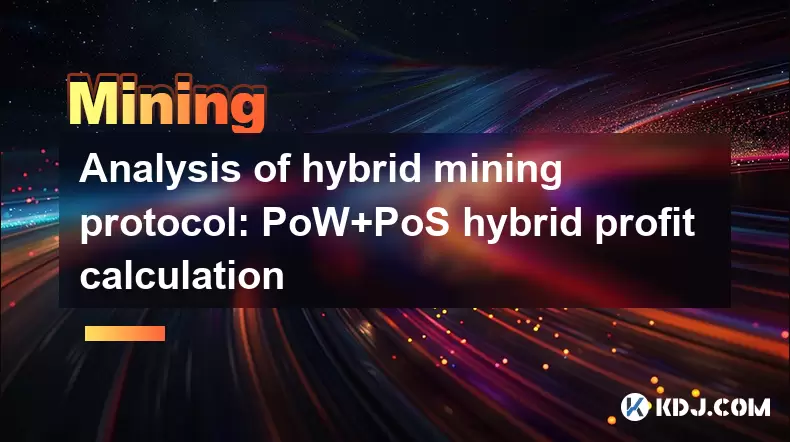
Analysis of hybrid mining protocol: PoW+PoS hybrid profit calculation
Jun 23,2025 at 10:15am
Understanding Hybrid Mining ProtocolsIn the realm of blockchain technology, consensus mechanisms are pivotal in maintaining network integrity and transaction validation. A hybrid mining protocol combines two or more consensus algorithms to achieve a balance between security, decentralization, and energy efficiency. The most commonly adopted hybrid model...

How to operate option mining? Hedging strategy and profit structure
Jun 21,2025 at 03:29pm
What is Option Mining?Option mining refers to a decentralized finance (DeFi) strategy where participants provide liquidity or take specific derivative positions in options protocols to earn rewards. Unlike traditional yield farming, option mining often involves liquidity provision for options markets, allowing users to generate returns through premiums ...
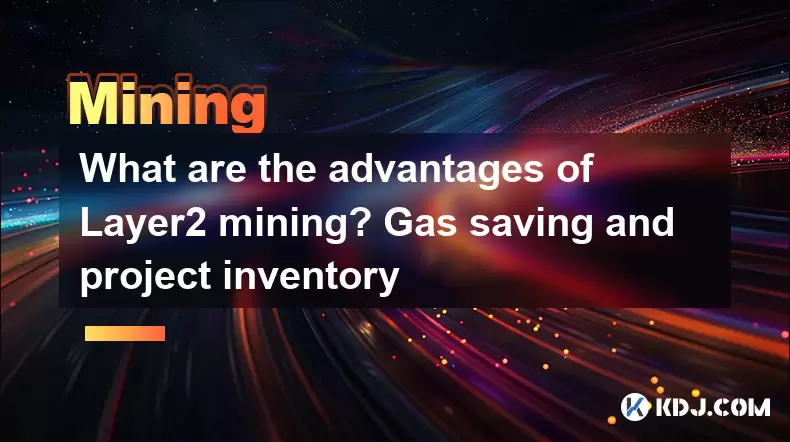
What are the advantages of Layer2 mining? Gas saving and project inventory
Jun 20,2025 at 04:50am
Understanding Layer2 Mining and Its SignificanceLayer2 mining refers to the process of participating in decentralized applications or protocols that operate on top of a primary blockchain (such as Ethereum) using scaling solutions like Optimism, Arbitrum, or zkSync. Unlike traditional mining on Layer1 blockchains, which often involves high computational...
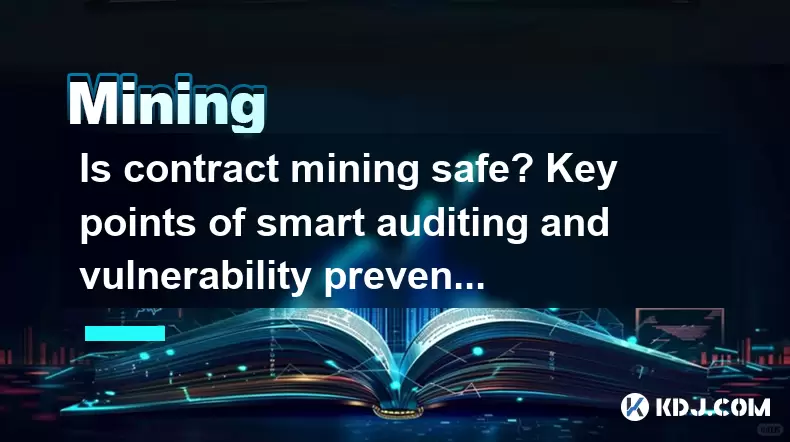
Is contract mining safe? Key points of smart auditing and vulnerability prevention
Jun 19,2025 at 08:08pm
Understanding Contract Mining in the Cryptocurrency SpaceContract mining refers to a method within blockchain ecosystems where users can participate in mining operations through smart contracts. Unlike traditional mining, which requires physical hardware and technical expertise, contract mining allows participants to invest funds into a mining pool or p...

What is liquidity mining in DeFi? How to participate and calculate the income?
Jun 20,2025 at 03:21pm
Understanding Liquidity Mining in DeFiLiquidity mining is a core concept in the decentralized finance (DeFi) ecosystem that allows users to earn rewards by providing liquidity to decentralized exchanges (DEXs) or lending platforms. In traditional finance, liquidity providers are usually institutional players, but DeFi democratizes this process, enabling...

What is the mining mechanism of digital currency? What hardware and cost investment are required?
Jun 23,2025 at 06:29am
Understanding the Mining Mechanism of Digital CurrencyThe mining mechanism of digital currency is a foundational process that ensures transaction validation and network security. In most Proof-of-Work (PoW) cryptocurrencies like Bitcoin, miners compete to solve complex mathematical puzzles using computational power. The first miner to find a valid solut...

Analysis of hybrid mining protocol: PoW+PoS hybrid profit calculation
Jun 23,2025 at 10:15am
Understanding Hybrid Mining ProtocolsIn the realm of blockchain technology, consensus mechanisms are pivotal in maintaining network integrity and transaction validation. A hybrid mining protocol combines two or more consensus algorithms to achieve a balance between security, decentralization, and energy efficiency. The most commonly adopted hybrid model...

How to operate option mining? Hedging strategy and profit structure
Jun 21,2025 at 03:29pm
What is Option Mining?Option mining refers to a decentralized finance (DeFi) strategy where participants provide liquidity or take specific derivative positions in options protocols to earn rewards. Unlike traditional yield farming, option mining often involves liquidity provision for options markets, allowing users to generate returns through premiums ...

What are the advantages of Layer2 mining? Gas saving and project inventory
Jun 20,2025 at 04:50am
Understanding Layer2 Mining and Its SignificanceLayer2 mining refers to the process of participating in decentralized applications or protocols that operate on top of a primary blockchain (such as Ethereum) using scaling solutions like Optimism, Arbitrum, or zkSync. Unlike traditional mining on Layer1 blockchains, which often involves high computational...

Is contract mining safe? Key points of smart auditing and vulnerability prevention
Jun 19,2025 at 08:08pm
Understanding Contract Mining in the Cryptocurrency SpaceContract mining refers to a method within blockchain ecosystems where users can participate in mining operations through smart contracts. Unlike traditional mining, which requires physical hardware and technical expertise, contract mining allows participants to invest funds into a mining pool or p...
See all articles























































































